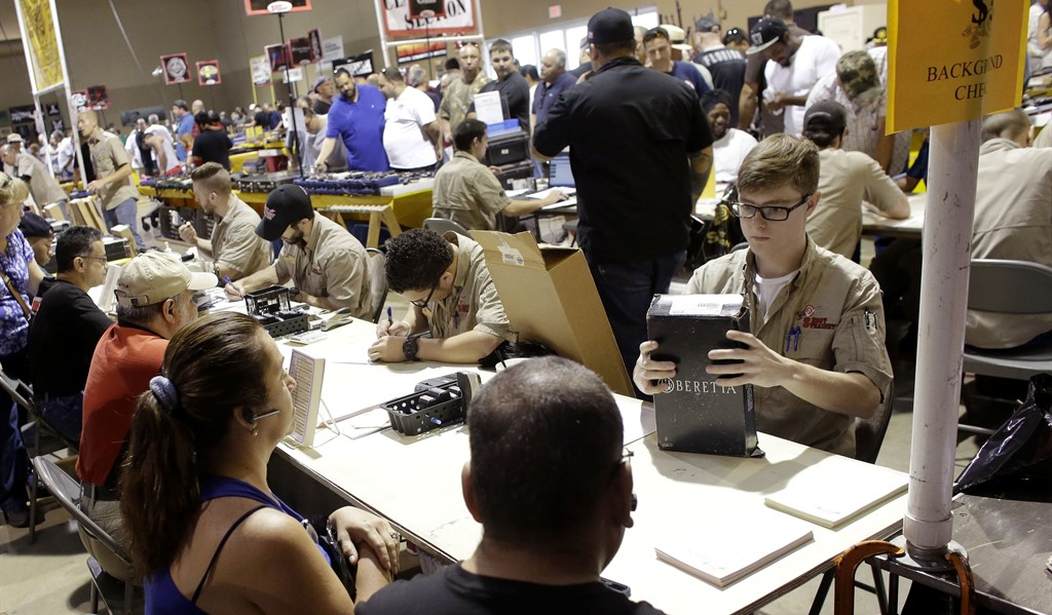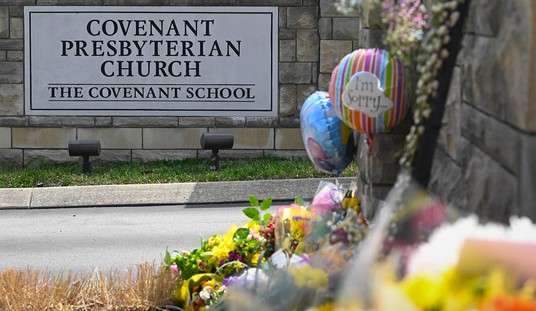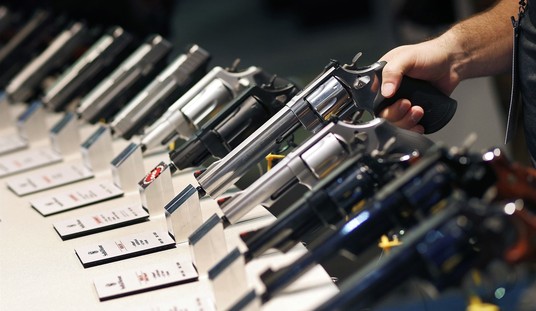Get ready for another social media meltdown from California Gov. Gavin Newsom, this time centered around two state laws banning gun shows; one at the Orange County Fairgrounds and another from all state-owned property. On Monday, U.S. District Judge John W. Holcomb granted an injunction barring enforcement of the statutes and refused to grant a temporary stay to allow the state time to appeal.
In his ruling, Holcomb said the gun show ban may have ostensibly been about public safety, but in practice violated the First Amendment in several ways.
The legislative findings of SB 264 do not identify any specific harms at the Orange County Fairgrounds, nor do they indicate that gun shows present any particular risk that exceeds those of awful gun sales accomplished at brick-and-mortar stores. Likewise, the legislative findings of SB 915 do not examine the Orange County Fairgrounds—or any other California gun shows—but, instead, they generalize the risks from other gun shows conducted across the United States, even though the legislative findings acknowledge that existing California law applies equally to all gun shows in the state. Further demonstrating the disconnect between the challenged statutes and the state’s purported goals, one of the studies upon which the legislative history relies states that “in California, where both gun shows themselves and gun commerce generally are regulated, sales at gun shows are not a risk factor among licensed retailers for disproportionate sales of crime guns.” Accordingly, under intermediate scrutiny and the Central Hudson test, SB 264 and SB 915 act an as unconstitutional infringement on commercial speech. The Court therefore concludes that Plaintiffs will likely prevail on that First Amendment claim.
The rules at gun shows are the same as they are at brick-and-mortar stores in the state, including the 10-day waiting period that precludes any firearms from actually being transferred at a show.
Holcomb’s decision on that particular First Amendment claim would have been enough to grant an injunction, but Holcomb was just getting started. He next concluded the plaintiffs are likely to succeed at trial with their argument that SB 264 and SB 915 were put into effect to discriminate against pro-Second Amendment voices.
Here, the Court finds sufficient evidence that SB 264 and SB 915 have a viewpointdiscriminatory purpose. Legislative history shows that the goal of the two statutes is to end gun shows in California, and, while the opinions and statements of legislators are not dispositive of viewpoint discrimination, see Dobbs v. Jackson Women’s Heath Org., 142 S. Ct. 2228, 2255 (2022) (“This Court has long disfavored arguments based on alleged legislative motives.”), those statements are circumstantial evidence that the statutes disfavor the lawful commercial speech of firearm vendors. In view of the above authorities and evidence, as well as the Orange County Fairgrounds’ status as a limited public forum, the Court concludes that Defendants are engaging in viewpoint discrimination by prohibiting otherwise-lawful gun shows.
Holcomb also sided with the plaintiffs claim that the gun show ban infringes upon “speech and expressive conduct by refusing to permit gun shows that exclude firearm vendors and sales”.
The First Amendment violations are clear enough, but Holcomb also agreed that the gun show ban likely violates the Second Amendment. Even though would-be gun buyers can still purchase a firearm at retail, the judge concluded that the statutes fail Bruen’s text, history, and tradition test. California Attorney General Rob Bonta pointed to several 18th and 19th-century statutes that regulated things like the “sale and storage of gunpowder, the manufacture of firearms and magazines, the fire inspection of arms depots, and the establishment of shooting galleries and gun ranges,” but Holcomb noted that none of those come close to enacting the sweeping prohibition put in place by California’s legislation.
Although those examples may show that states exercised regulatory power over the possession and sale of firearms and ammunition, Defendants cannot properly analogize those regulations to a complete prohibition of the sale of otherwise-lawful firearms at the Orange County Fairgrounds or at other gun shows held on state property. Regulations governing the safety of firearms and gunpowder in the 1800s cannot act as a self-serving carveout for states to ban the sale of firearms, or otherwise to infringe Second Amendment rights that are concomitant with First Amendment protections for commercial speech.
Moreover, “[i]n analyzing possible analogues, one of the aspects of the laws the Court must consider is whether the historical ‘restrictions imposed a substantial burden on [the Second Amendment right] analogous to the burden created by’ the current law.” Throughout their papers, Defendants repeatedly recite that the purposes behind the challenged statutes are to prevent illegal firearm sales and to stop the crimes associated with those illegal sales. None of the laws that Defendants identify as historical analogs banned the sale of otherwise-legal firearms, nor did those laws regulate any limited public forum analogous to gun shows like those held at the Orange County Fairgrounds.
If anything, the fact that gun shows in California must fully comply with all laws applicable to brick-and-mortar stores makes the above comparators inapposite, because the examples that Defendants cite were equally applied to all firearm vendors and gunowners. No law that Defendants cite permitted the state arbitrarily to ban firearm sales in disfavored forums, nor did those laws discriminate between gun vendors based upon whether the sales took place on public or private land. Statements by the challenged bills’ author highlight the difficulty that Defendants face in finding a historical analog; California State Senator Min declared that “California will become the first in the nation to enact a total ban statewide” on gun shows. The right to sell firearms is neither freestanding nor unlimited, but neither is the state’s ability to impose restrictions on firearms that are inconsistent “with the Second Amendment’s text and historical understanding.”
Though Holcomb refused the state’s request to stay the injunction and allow them time to appeal, I don’t expect any Crossroads of the West gun shows to happen anytime soon. These events are usually scheduled months, if not years, in advance, and that’s plenty of time for the Ninth Circuit to step in and once again give the state power to enforce a challenged statute. I hope I’m wrong, and this case is certainly strong enough to break the Ninth’s streak. Then again, so were Judge Benitez’s decisions in Duncan and Miller and that didn’t matter much.
Still, congratulations are in order to attorneys Chuck Michel, Anna Barvir, and Tiffany Cheuvront of Michel & Associates, the California Rifle & Pistol Association and the Second Amendment Foundation, and well as the Asian Pacific American Gun Owners Association, the Second Amendment Law Center, Crossroads of the West gun shows, and the four individual plaintiffs who are a party to the lawsuit. Holcomb’s decision was well-crafted and thorough in its takedown of California’s attempt to infringe on the First and Second Amendment rights of gun owners and 2A advocates, and whatever shenanigans some Ninth Circuit judges might be scheming about I think these gun show bans aren’t going to withstand scrutiny from SCOTUS.








Join the conversation as a VIP Member